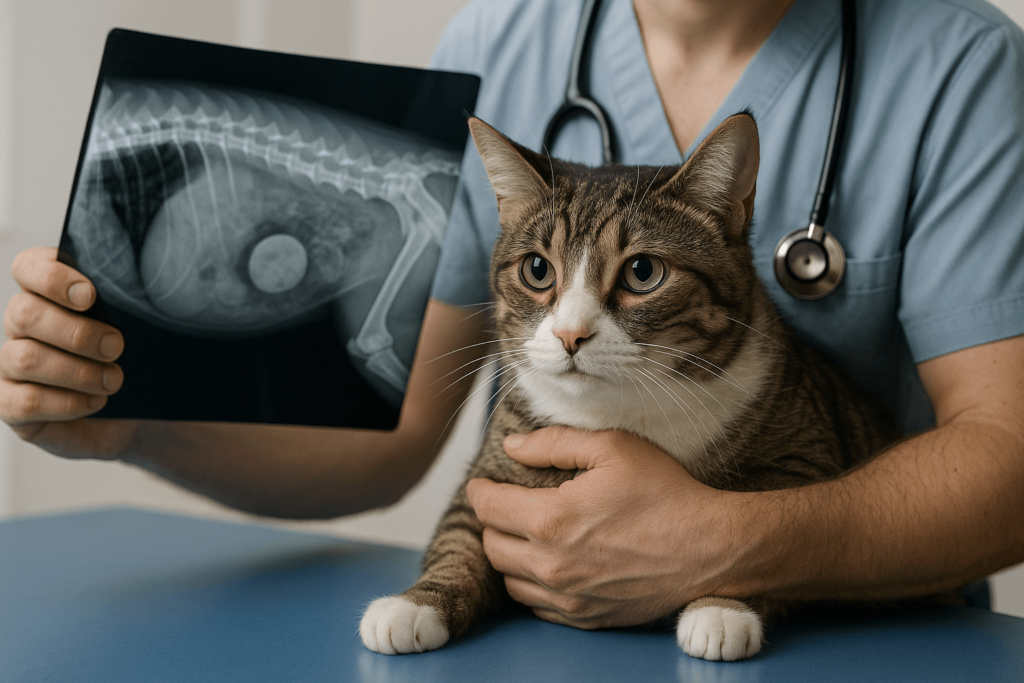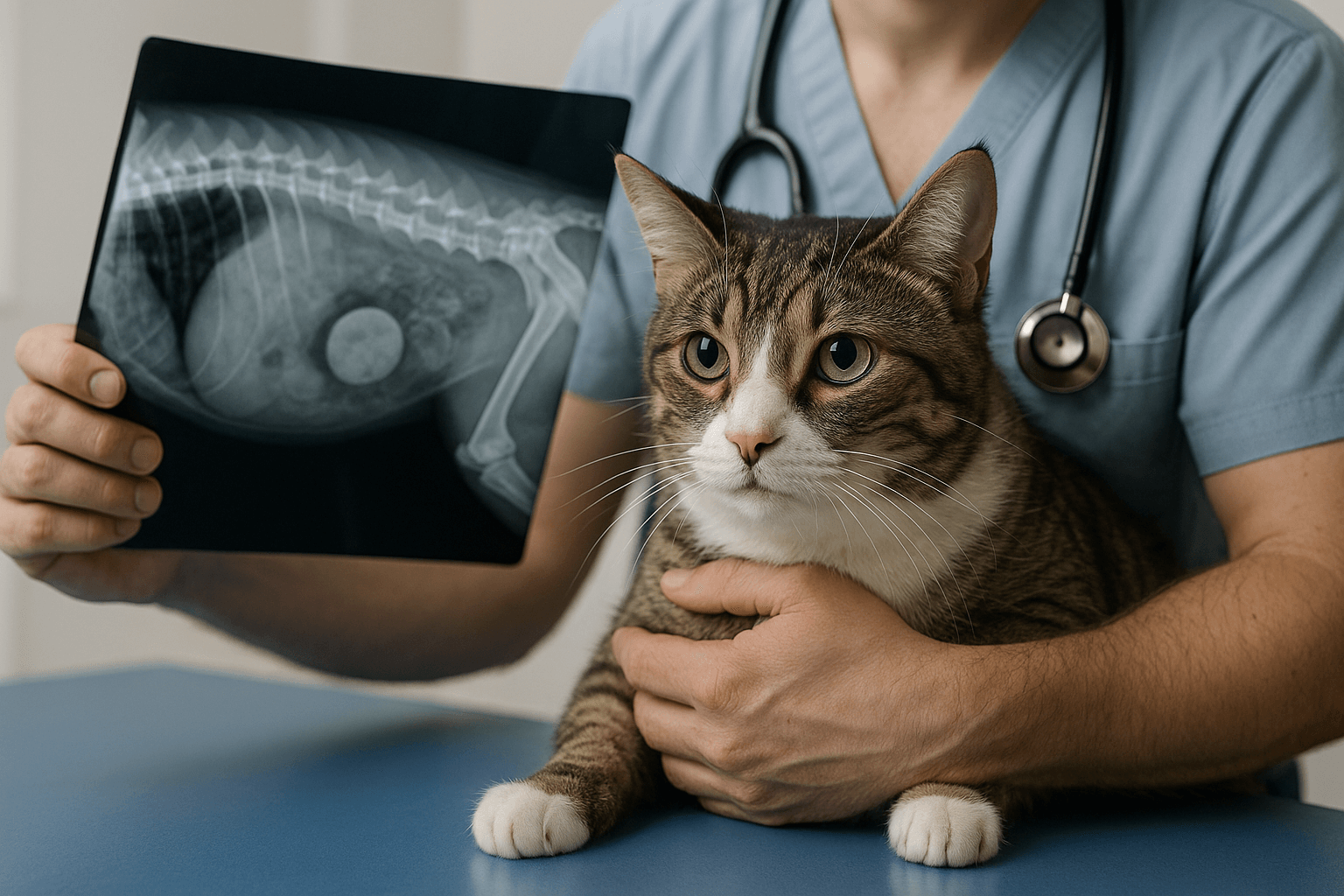Cat Intestinal Blockage Timeline: What Happens Hour by Hour When Your Cat Can’t Pass Food
A cat with an intestinal blockage doesn’t just have a tummy ache—it’s fighting for its life. What begins as subtle lethargy can spiral into a medical emergency within hours. Unlike humans, cats hide pain until it’s unbearable, making early detection critical. Understanding the timeline of a cat intestinal blockage isn’t just about recognizing symptoms—it’s about knowing when every minute counts. This guide breaks down the progression from the first subtle signs to life-threatening collapse, so you can act before it’s too late.
The Early Warning Signs: Hours 0–12
In the first 12 hours, a cat with a partial or developing blockage may still appear relatively normal. This is the most deceptive phase—your cat might still eat, purr, or even play. But beneath the surface, their body is already under siege.
Loss of Appetite:
Even a normally voracious eater may turn away from food. This is often the first and most reliable red flag.Mild Lethargy:
Your cat may sleep more than usual, avoid jumping, or seem less interested in interaction.Occasional Vomiting:
They might vomit once or twice—often just saliva or undigested food—but no bile yet.Reduced Bowel Movements:
You may notice fewer or no poops in the litter box, even if your cat tries to use it.Abdominal Discomfort:
They might hunch slightly, flinch when touched, or lick their belly more than usual.
This stage is easily mistaken for “just not feeling well.” But in cats, subtle changes are loud warnings. If your cat skips a meal and seems off, don’t wait.

The Rapid Deterioration: Hours 12–36
By 12 to 36 hours, the blockage is fully active. The gut begins to swell, toxins start to leak into the bloodstream, and dehydration sets in fast. This is the critical window where intervention can still save your cat’s life.
Persistent Vomiting:
Vomiting becomes frequent, sometimes projectile. You may see bile (yellow-green fluid) or even blood.Severe Dehydration:
Skin tenting (pinching skin on the back)—if it doesn’t snap back quickly—means your cat is losing fluids rapidly.Distended Abdomen:
The belly may look swollen or feel tight and hard to the touch.No Urination or Defecation:
Complete absence of litter box use for over 24 hours is a dire sign.Weakness and Collapse:
Your cat may struggle to stand, walk unsteadily, or lie in one spot without moving.
At this point, the intestines are under extreme pressure. Tissue begins to die. Time is no longer on your side—it’s running out.
Check this guide 👉What Consistency Should Cat Poop Be? Best 7 Expert Tips!
Check this guide 👉Should a Cat Poop Every Day? Best 7 Expert Tips!
Check this guide 👉Sour Smelling Cat Poop: Best 7 Expert Tips!
| Timeline Phase | Key Clinical Indicators |
|---|---|
| 0–12 Hours (Early) | Loss of appetite, mild lethargy, occasional vomiting, reduced stool output |
| 12–36 Hours (Progressive) | Frequent vomiting, abdominal distension, dehydration, no bowel movements, weakness |
| 36–48 Hours (Critical) | Severe dehydration, fever or hypothermia, rapid heart rate, pale gums, visible pain |
| 48–72 Hours (Life-Threatening) | Shock, sepsis, organ failure, unconsciousness, inability to stand |
| Beyond 72 Hours (Terminal) | Irreversible tissue death, multi-organ shutdown, death without emergency intervention |
The Breaking Point: Hours 36–48
By 36 to 48 hours, the blockage has caused irreversible damage. The intestinal wall begins to rupture or necrose. Toxins flood the bloodstream, triggering systemic collapse.
Fever or Hypothermia:
A cat’s temperature may spike dangerously high—or drop below normal as their body shuts down.Rapid or Weak Pulse:
Heart rate increases as the body tries to compensate, but pulses become faint and erratic.Pale or Blue Gums:
This indicates poor circulation and oxygen deprivation—a sign of shock.Visible Pain Responses:
Your cat may cry out, bite when touched, or arch their back in agony.Unresponsiveness:
They may stop reacting to your voice, touch, or even their name.
This is not a “wait-and-see” moment. This is a 911 call. Delaying veterinary care now means your cat may not survive transport to the clinic.
The Point of No Return: Hours 48–72
Between 48 and 72 hours, the intestinal tract is often beyond repair. The risk of sepsis, peritonitis, and multi-organ failure skyrockets.
Sepsis Symptoms:
Shaking, extreme lethargy, cold extremities, and a fruity or foul odor from the mouth.Kidney Failure:
Toxins from the blocked gut overwhelm the kidneys, causing vomiting, increased thirst, or no urine.Liver Damage:
The liver struggles to filter toxins, leading to jaundice (yellowing of eyes or gums).Respiratory Distress:
Fluid buildup and shock can cause rapid, shallow breathing.Loss of Consciousness:
Your cat may slip into a coma-like state, unresponsive to stimuli.
Survival at this stage is rare without immediate, aggressive surgery and ICU-level care. Even then, the prognosis is guarded.
Beyond 72 Hours: The Terminal Stage
If the blockage remains untreated beyond 72 hours, the outcome is almost always fatal.
Tissue Necrosis:
Sections of the intestine die and rupture, spilling fecal matter into the abdominal cavity.Peritonitis:
A life-threatening infection of the abdominal lining develops rapidly.Cardiac Arrest:
The heart can no longer sustain circulation due to systemic toxicity.Irreversible Brain Damage:
Lack of oxygen and toxins cause neurological shutdown.Death:
Without emergency intervention, death occurs within hours.
This is not a natural end. It’s a preventable tragedy. Most cats who die from intestinal blockages do so because their owners didn’t recognize the early signs—or waited too long to act.
Common Causes of Intestinal Blockages in Cats
Knowing what causes blockages helps you prevent them—and spot them sooner.
String, Yarn, or Thread:
Especially dangerous if ingested by kittens or curious cats. Can cause “linear foreign bodies” that saw through the intestines.Hairballs:
While rare, large, hardened hairballs can obstruct the digestive tract, especially in long-haired breeds.Toys or Small Objects:
Buttons, rubber bands, plastic pieces, and toy parts are common culprits.Bones or Hard Food:
Cooked chicken bones splinter; dry kibble can clump with hair or debris.Tumors or Intussusception:
Internal causes like growths or telescoping of the intestine can mimic blockage symptoms.
Prevention starts with cat-proofing your home and monitoring what your cat chews or swallows—even if it seems harmless.
What to Do If You Suspect a Blockage
Time is not your friend. Here’s exactly what to do—step by step.
Do NOT Induce Vomiting:
This can cause aspiration or worsen the blockage if it’s already lodged.Do NOT Give Laxatives or Home Remedies:
Oils, milk, or fiber supplements can make things worse.Call Your Vet Immediately:
Describe symptoms precisely. Say “I suspect intestinal blockage” — this triggers urgency.Prepare for Emergency Transport:
Bring a carrier, leash, and any recent photos of what your cat may have eaten.Stay Calm:
Your cat will sense your panic. Speak softly, move gently, and get them to the clinic ASAP.
The difference between life and death often comes down to how quickly you act after noticing the first symptom.
FAQ: Cat Intestinal Blockage Timeline
Can a cat pass a blockage on its own?
Rarely. Most blockages require medical intervention. Even small objects can cause fatal complications if they don’t move.
How long can a cat survive with a blockage?
With partial blockage: up to 3–4 days. With complete blockage: 36–72 hours maximum. Survival beyond 72 hours is extremely unlikely without surgery.
Is vomiting always a sign of blockage?
No—but persistent vomiting, especially with no defecation, is a major red flag. One episode is normal; three or more in 24 hours is not.
Can a hairball cause a blockage?
Yes. Especially in long-haired cats or those with excessive grooming. If your cat retches for hours without producing anything, it may be blocked.
What’s the survival rate after surgery?
80–90% if treated before 48 hours. Drops to 30–50% after 72 hours. Early action saves lives.
Act Before It’s Too Late
A cat’s body is not built to wait. It doesn’t scream. It doesn’t beg. It simply stops eating, stops moving, and slowly fades.
The timeline of an intestinal blockage is merciless—but it’s not invisible.
The first sign isn’t vomiting.
It’s silence.
It’s the empty food bowl.
It’s the quiet cat who used to greet you at the door—and now just lies there.
Canned Pumpkin for Cat Diarrhea: Best 7 Expert Tips! Natural remedy to firm stools, soothe upset bellies, and support gut health safely.
Can a Cat Give You Scabies? Best 7 Expert Tips! Discover the truth about feline mites, human skin risks, and how to protect yourself—without panic.
Cat Flea vs Human Flea: Best 7 Expert Tips! Discover the truth about bites, species, and how to eliminate infestations for good.
Weird Cat Behaviors: Best 7 Expert Tips! Discover why cats do strange things—and how to understand, not punish, their instincts for a happier home.





